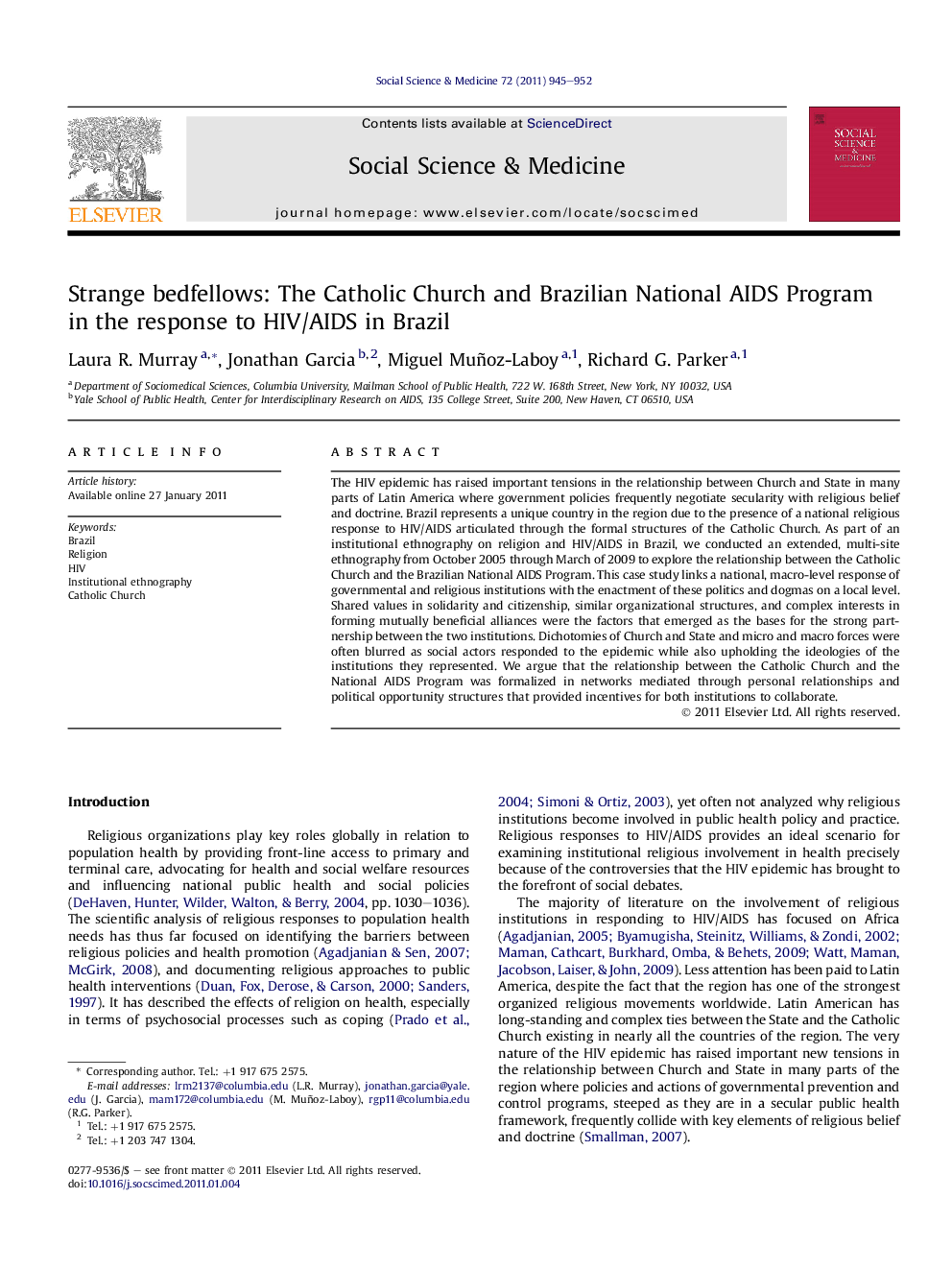| کد مقاله | کد نشریه | سال انتشار | مقاله انگلیسی | نسخه تمام متن |
|---|---|---|---|---|
| 952678 | 927531 | 2011 | 8 صفحه PDF | دانلود رایگان |

The HIV epidemic has raised important tensions in the relationship between Church and State in many parts of Latin America where government policies frequently negotiate secularity with religious belief and doctrine. Brazil represents a unique country in the region due to the presence of a national religious response to HIV/AIDS articulated through the formal structures of the Catholic Church. As part of an institutional ethnography on religion and HIV/AIDS in Brazil, we conducted an extended, multi-site ethnography from October 2005 through March of 2009 to explore the relationship between the Catholic Church and the Brazilian National AIDS Program. This case study links a national, macro-level response of governmental and religious institutions with the enactment of these politics and dogmas on a local level. Shared values in solidarity and citizenship, similar organizational structures, and complex interests in forming mutually beneficial alliances were the factors that emerged as the bases for the strong partnership between the two institutions. Dichotomies of Church and State and micro and macro forces were often blurred as social actors responded to the epidemic while also upholding the ideologies of the institutions they represented. We argue that the relationship between the Catholic Church and the National AIDS Program was formalized in networks mediated through personal relationships and political opportunity structures that provided incentives for both institutions to collaborate.
► Advances theoretical understanding of sustained network formation between religious and public health institutions.
► Links micro and macro trends in a historical context to the development of a national response to the HIV epidemic.
► Challenges notions of secularity by documenting the role of social actors operating at the border of Church and State.
► Proposes an innovative methodological framework to study institutions from a multilevel, multi-site, and historical perspective.
Journal: Social Science & Medicine - Volume 72, Issue 6, March 2011, Pages 945–952